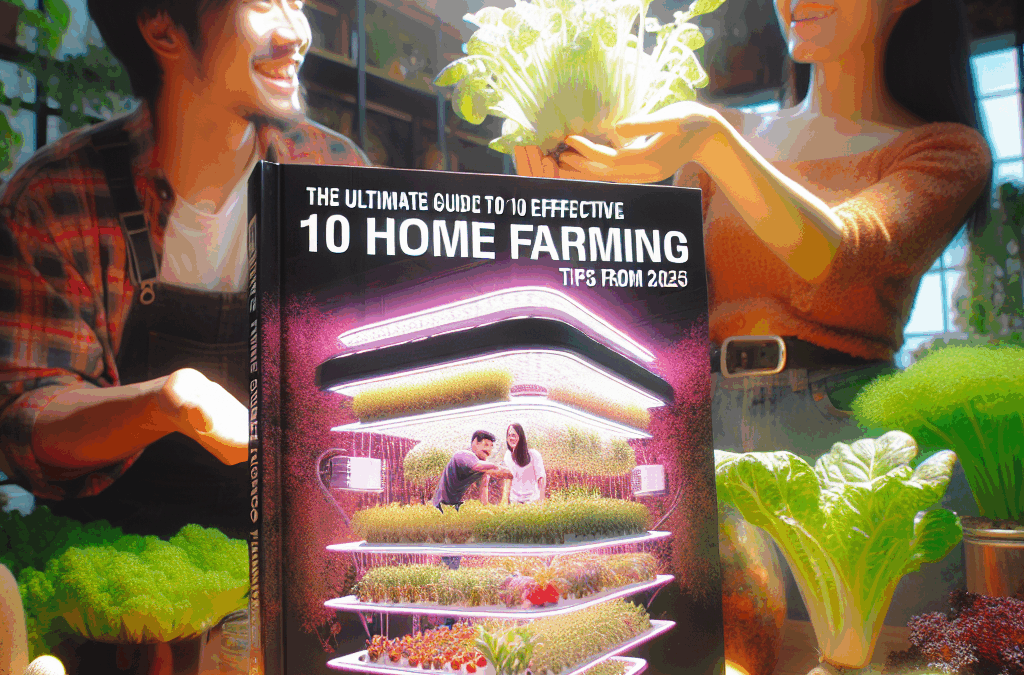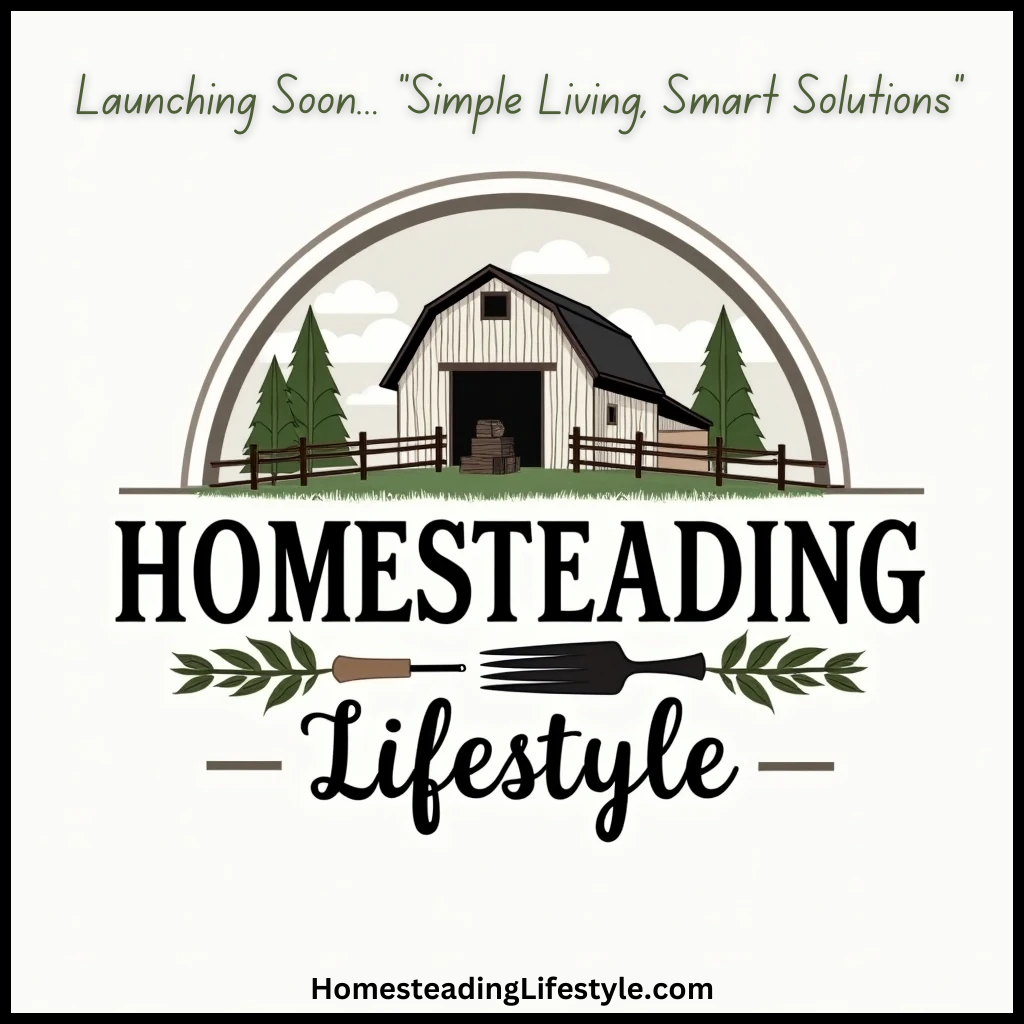Table of Contents
- 1. Smart Soil Management
- 2. Vertical Gardening Solutions
- 3. Efficient Irrigation Systems
- 4. Organic Pest Control
- 5. Composting for Nutrition
- 6. Selecting the Right Crops
- 7. Lighting and Temperature Control
- 8. Utilize Smart Farming Technology
- 9. Effective Harvesting and Preservation
- 10. Sustainable and Eco-Friendly Practices
1. Smart Soil Management
Understanding Soil Health
Healthier soil leads to more bountiful home farms in 2025. Modern home farmers are increasingly investing in soil testing kits to monitor pH levels, nutrient density, and moisture. This data-driven approach allows you to adjust amendments and ensure optimal conditions for your plants. Using organic fertilizers like compost and manure enriches the soil naturally, reducing dependency on chemical inputs.
Recent studies show that soil health has a direct impact on crop yields, with healthy soil increasing productivity by up to 30%. Implementing crop rotation and cover cropping further improves soil vitality and suppresses pests naturally. Regularly monitoring and managing your soil is one of the fundamental home farming tips for success this year.
Amending Your Soil Effectively
Adding organic matter such as compost, biochar, and organic fertilizers helps build a robust soil ecosystem. These amendments improve soil structure, water retention, and microbial activity. For instance, incorporating compost not only supplies essential nutrients but also enhances soil aeration, which benefits root development.
In 2025, smart home farmers are using digital soil sensors that transmit real-time data to mobile apps, helping them make precise amendments. This technology-driven approach is revolutionizing traditional soil management, making it more effective and sustainable.
2. Vertical Gardening Solutions
Maximizing Space in Small Homes
Vertical gardening has become one of the top home farming tips for those with limited space. Installing wall-mounted planters, trellises, or even hydroponic towers allows you to grow herbs, vegetables, and flowers vertically. This method makes efficient use of available space and adds an aesthetic appeal to your home garden setup.
In 2025, innovations like modular, self-watering vertical units make maintenance easier and reduce water usage. For city dwellers or those with small yards, vertical farming can yield surprising amounts of produce while occupying minimal footprint.
Choosing the Right Plants for Vertical Growth
Leafy greens like lettuce, kale, and spinach thrive in vertical gardens due to their compact size. Tomatoes, cucumbers, and pole beans also do well vertically, especially when trained on trellises or cages. Selecting the right plants for vertical growth ensures a productive and manageable home farm.
By exploring specific crops suited for vertical systems, you optimize your space in 2025 and enjoy fresh produce year-round, fulfilling the home farming tips for efficiently utilizing available resources.
3. Efficient Irrigation Systems
Drip and Micro-spray Systems
One of the key home farming tips for 2025 is adopting water-efficient irrigation methods. Drip systems deliver water directly to the plant roots, minimizing waste and evaporation. Micro-spray systems are also excellent for leafy greens and herbs, providing gentle, targeted watering.
Investing in automated timers and soil moisture sensors ensures your plants receive consistent hydration, reducing both overwatering and underwatering. These smart irrigation setups are especially valuable during dry seasons or in climates with water restrictions.
Water Conservation Techniques
Harvesting rainwater and installing rain barrels can significantly cut water bills and promote sustainable farming practices. Collecting rainwater not only conserves municipal water but also provides naturally soft water that benefits plant health.
In 2025, integrating IoT (Internet of Things) technology into your irrigation system allows real-time monitoring and control from your smartphone. This innovation represents a major step forward in efficient home farming tips, conserving resources while maximizing yield.
4. Organic Pest Control
Natural Pest Management Strategies
Pests pose a challenge, but organic home farming tips emphasize natural solutions. Introducing beneficial insects like ladybugs and predatory mites controls aphids and mites naturally. Companion planting, such as basil near tomatoes, repels common pests and enhances plant growth.
DIY organic sprays made from neem oil, garlic, or chili peppers are effective, safe, and environmentally friendly. Regular observation and early intervention are key to preventing infestations before they become severe.
Preventative Measures
Preventing pests is easier than fighting an infestation later. Maintaining healthy soil, crop diversity, and proper sanitation reduces pest habitats naturally. Avoiding chemical pesticides aligns with the eco-conscious trends of 2025 and keeps your home farm safe for family and pollinators.
Applying mulch can also deter soil-borne pests and conserve moisture, making organic pest control one of the most sustainable home farming tips for this year.
5. Composting for Nutrition
Creating Rich Compost
Composting is a cornerstone of sustainable home farming tips in 2025. Rich, well-balanced compost supplies essential nutrients to your plants, reduces waste, and improves soil health. Ingredients include kitchen scraps like vegetable peelings, coffee grounds, and garden waste.
Maintaining the right carbon to nitrogen ratio and aerating the compost pile accelerate decomposition. Turn the compost regularly and monitor moisture levels for best results. Using compost tea as a liquid fertilizer enhances nutrient availability for your crops.
Using Technology in Composting
Smart composters equipped with temperature sensors and digital monitoring make composting easier for busy home farmers. These tech solutions speed up compost decomposition and ensure the compost develops the maximum nutritional potential.
In 2025, these innovations make composting more accessible and efficient, turning your organic waste into a valuable resource for productive home farms.
6. Selecting the Right Crops
Choosing Crops for Year-Round Farming
One of the most practical home farming tips for 2025 involves selecting crops suited for your climate and season. Tomatoes, peppers, and herbs are popular for summer, while leafy greens like lettuce and kale thrive in cooler months. Investing in crop varieties with shorter maturity periods allows for continuous harvests.
Research local growing zones and opt for resilient, disease-resistant cultivars. Growing a diverse range of crops minimizes risks and can improve overall yield, making your home farm more productive and sustainable.
Native and Heirloom Varieties
Native plants and heirloom varieties are increasingly popular among home farmers in 2025. They tend to be more adapted to local conditions, requiring less water and pest control. Plus, they preserve genetic diversity and add flavor and nutritional value to your diet.
Experimenting with different crop types not only enriches your culinary experience but also strengthens your home farming tips repertoire for effective, sustainable gardening practices.
7. Lighting and Temperature Control
Optimizing Light for Indoor Farming
Indoor farming continues to grow in popularity as a home farming tip for 2025. Supplemental LED grow lights provide the necessary spectrum for plant growth. Positioning lights correctly and maintaining consistent photoperiods enhances photosynthesis and crop yields.
Smart lighting systems with timers and dimmers help simulate natural sunlight, especially in regions with limited sunlight during winter. Proper lighting ensures healthy plant growth regardless of external weather conditions.
Controlling Indoor Climate
Monitoring and adjusting temperature and humidity are vital for indoor farms. Using small heaters, fans, and dehumidifiers allows control over environmental conditions, preventing issues like mold or stunted growth. Insulation and ventilation improve energy efficiency and plant health.
In 2025, integrating environmental sensors with home automation systems offers real-time adjustments, making indoor farming easier and more successful.
8. Utilize Smart Farming Technology
Smart Sensors and Data Analytics
Embracing technology is one of the most forward-looking home farming tips for 2025. Smart sensors can monitor soil moisture, nutrient levels, and environmental conditions, sending data directly to your smartphone. This information allows you to make precise decisions for watering, fertilizing, and pest management.
Data analytics platforms interpret this data, providing actionable insights. Many systems are now easily integrated with smart home setups, making home farming more automated and efficient.
Automation and AI Integration
Automation systems control irrigation, lighting, and ventilation, reducing manual effort and optimizing plant growth. Artificial intelligence algorithms can recommend planting schedules, pest control measures, and nutrient applications based on weather forecasts and sensor data.
By 2025, leveraging these smart farming technologies maximizes productivity, conserves resources, and makes home farming more accessible even for beginners.
9. Effective Harvesting and Preservation
When and How to Harvest
Timely harvesting is crucial for flavor and nutritional value. Learning the specific signs of maturity for each crop ensures you enjoy peak freshness. Use clean tools to harvest and handle crops gently to avoid damage.
Regular harvesting encourages plants to produce more and prevents overripe, rotting produce, which can attract pests and diseases. Keeping a harvest calendar helps you stay organized and maximize yields.
Preservation Techniques
Preserving your home-grown produce extends your harvestâs lifespan. Techniques such as freezing, drying, fermenting, and canning are simple and effective. For example, freezing herbs in ice cube trays allows easy addition to dishes later.
Proper storage conditions, like cool, dark, and dry environments, prevent spoilage. Employing preservation methods ensures your efforts in home farming tips pay off throughout the year.
10. Sustainable and Eco-Friendly Practices
Reducing Carbon Footprint
Adopting sustainable practices is essential for future-proofing your home farm in 2025. Using renewable energy sources such as solar-powered lights and pumps reduces your carbon footprint. Mulching and water conservation techniques save resources as well.
Buying organic seeds and soil amendments supports eco-friendly farming, helping prevent soil degradation and pollution. These practices not only benefit your garden but also contribute to global sustainability efforts.
Creating a Self-Sufficient Home Farm
Growing a variety of crops, composting organic waste, and rainwater harvesting create a self-sufficient system. Integrating renewable energy, smart irrigation, and pest control methods minimizes external dependencies and maximizes your farmâs resilience.
Maintaining eco-friendly practices aligns with the latest trends for sustainable living in 2025 and ensures your home farming tips promote environmental well-being.
Frequently Asked Questions
1. What are the best home farming tips for beginners in 2025?
Start small with easy-to-grow crops, use organic soil amendments, invest in efficient watering systems, and leverage technology for monitoring. Patience and consistent care are key to success.
2. How can I maximize space in my small home farm?
Vertical gardening, container planting, and utilizing multi-storey setups help optimize limited space. Choosing space-efficient crops also increases yield in confined areas.
3. What are the top sustainable home farming tips for 2025?
Use renewable energy, compost organic waste, harvest rainwater, choose native or heirloom plants, and minimize chemical inputs for eco-friendly home farming.
4. How do I keep pests away naturally?
Implement companion planting, introduce beneficial insects, and use organic sprays to control pests without chemicals. Regular inspection helps catch issues early.
5. Why is soil health important for home farming tips?
Healthy soil provides essential nutrients, improves water retention, and supports beneficial microbes, leading to better crop yields and resilient plants.
Final Thoughts
Following these 10 effective home farming tips for 2025 can transform your small-scale gardening into a productive, sustainable, and enjoyable endeavor. From smart soil management to embracing modern technology, each tip contributes to building a resilient and eco-friendly home farm. Remember, consistency and innovation are your best tools â and donât forget to incorporate the key home farming tips into your routine to achieve the best results this year and beyond.






